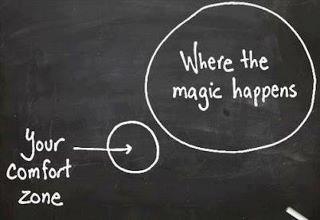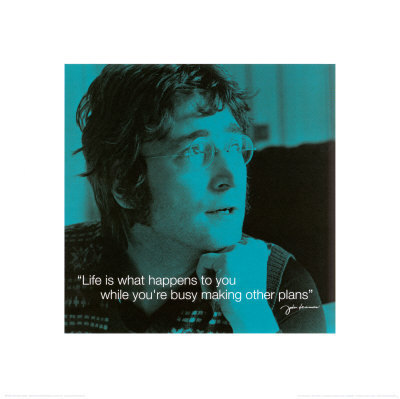Jeremie Averous's Blog, page 149
July 3, 2012
Fourth Revolution in action: online universities are becoming mainstream!
Online universities are becoming recognized and deliver more and more degrees.
We had touched upon this issue in the post “Another Institution under Siege from the Fourth Revolution: Universities – Will they Reinvent themselves in time?” with the example of Udacity, a revolutionary online university.

Online universities are becoming mainstream
Traditional universities are now coming into play. The MIT had its courses available online for a while, but now it is a real rush towards the ever growing market of university degrees online.
Recently, the MIT and Harvard announced the creation of edX, a platform for online studying and learning (visit the edX site here and read the edX press release here). This platform has an exciting ambitious growth plan, offering classes online for free for millions (but probably paying degrees!).
This excellent post by OnlineUniversities.com, “8 nations leading the way in online education” summarizes the situation and what are the most advanced countries in the field of online education: USA, India, China, South Korea, Malaysia, UK, Australia, South Africa. Many of these countries are geographically very large or serve as a hub for a large region, offering education opportunities for many.
Online education cannot probably replace face-to-face education in all disciplines but it can in many scientific ones. It is an incredible occasion for people to grow themselves for free. It is an incredible occasion to grow the knowledge base of humankind into the remotest corners of the planet.
Those countries and those universities that will miss this revolution will trail behind and eventually disappear into oblivion. When online universities will do more than just broadcasting, when they will unleash the power of collaboration, they will dwarf Industrial Age universities. This will happen soon.
When will you start taking the classes you always dreamed of taking online, for free?

June 30, 2012
How do you recognize if you are on the way to create magic?
I love this image. And I wonder where I am right now. How much am I stretching myself outside my comfort zone? Is it enough to get to “where the magic happens”? Am I leaning in the right direction?

Gosh! Do I really need to go beyond my comfort zone?
Tough questions, precisely because I am out of my comfort zone, not quite at ease. I literally dream sometimes to get back in the comfort zone (having a simple, cosy job as an employee in a large corporation, no more worries about marketing and end-of-the-month cash?).
In that general context of uneasiness how can I know whether I am moving in the right direction to encounter magic? How will I recognize magic? That’s a tough question!
Actually, magic is easy to recognize: it is when what you do resonates with people, when you get conversations started because people are interested, when people ask to meet you to discuss what you are doing.
Once you meet the magic, the energy you get from these encounters and these conversations makes you lean even more outside your comfort zone, and necessarily in the right direction.
So, do people resonate with what you do? If not, continue to seek by experimenting. If yes, then lean further in that direction.

June 28, 2012
The Motivation Revolution: how to move from extrinsic to intrinsic motivation
I loved reading the book “Drive” by Daniel Pink.  We already referred to it a few months ago in the post “what motivates the K.E.E.N.“.
We already referred to it a few months ago in the post “what motivates the K.E.E.N.“.
Daniel Pink uses a framework for the evolution of motivation in history that is similar to the ‘fundamental revolutions’ familiar to the readers of this blog:
Motivation 1.0 – 50,000 years ago – survival
Motivation 2.0 - extrinsic motivators: seek reward and avoid punishment (which lead to put some barriers for social life (don’t steal your neighbor’s wife), etc).
Motivation 2.1 – empowerment in organizations, greater autonomy
Motivation 3.0 – intrinsic motivators: autonomy, mastery, purpose. (the drivers of the Collaborative Age)
It is a real revolution to switch from extrinsic to intrinsic motivators. Yet as our live example of the Collaborative Age organization shows, in these organizations, only intrinsic motivation is at work.
How can we change our extrinsic motivation mindset? No, above a certain level, people won’t stay because you pay them more to do the same boring job. They need to find purpose and fulfillment. How can you give it to them? Only by allowing initiative, failure and releasing control. That will be the secret of success of the Collaborative Age organization. Are you ready for it?
(And for those that have not seen the RSA animation drawn from the book, here it is – and if you’ve seen it, watch it again because it is so fundamental:)

June 26, 2012
The 5 career things I did believe, but don’t believe any more
I liked the idea of this post of Amber Naslund about thinking about the things that we did believe, but do not believe anymore. She did it in the field of her career.

looking into the rear-view mirror of your life: what do you see?
I’ll do it in the field of the Fourth Revolution’s K.E.E.N.’s (Knowledge Enhancing Exchanging Networker) career. Here are a few things that I believed, but do not believe any more.
Corporate jobs are safe
Corporate jobs are not safe any more, and in particular if you get closer to the top or older. There are many examples on a daily basis. Or, they are not safer than being on your own. Still companies would like us to believe that it is safer to be with them because it simplifies their management.
The only career path is to climb up in a specific function
I had many recommendations to try to be a specialist in a single function, and I used to think that the only career path was upwards; I found much more satisfying occupations when moving side-ways and becoming a generalist. It even increased dramatically my worth and marketability. But for some reason the normal career path is up through a narrow funnel.
Expatriation is just a must-do temporary assignment
Expatriation is generally presented nowadays as a must-do for career development; but at the same time it is not recommended to stay too far from headquarters for too long or be forgotten – the rule is to come back quick!. I found the expatriation experience a life-changing experience; and as a K.E.E.N. now, while I feel that my roots are still in France, I don’t mind continuing to live wherever I can best exercise my talents.
Protect your ground to avoid being eaten up by more ambitious
Lots of the corporate life is made of battles to consolidate one’s chiefdom; and this generates all the internal politics. Collaboration is, on the long term, a much better strategy; the K.E.E.N. exchanges its knowledge and creates conversations to create new, disruptive insights at the interface between specialties and industries.
The corporation needs to defend itself from the outside by all means
The traditional corporation is a closed world with limited relationship with the outside. Discussion with stakeholders is strictly regimented. Social networks are forbidden. Those corporations will be overtaken by the evolution of the world. Openness, creating conversations and a tightly knit network of supporters and followers, is now necessary for the organizations to thrive.
And you, what are the beliefs you had that you don’t believe any more?

June 23, 2012
Organizations today “are leading a workforce of communicators”
Contrary to what you might think, this is not an assertion by some hyped Californian startup leader.

Admiral Gary Roughead on social networks
It is a very serious statement by Adm. Gary Roughead, until recently the Chief of Naval Operations of the US Navy.
Like any other organization, the military finds that it is good to adopt social networks and a proactive social networks policy. Just erecting high walls and prohibiting people from using social networks would be a disaster.
And the Navy has found how social networks like Facebook can bring tremendous value to their action. Compared to official reporting, social networks give a more agile and deeper communication system, allowing to touch people directly, allowing a community to form and help on a local level, complementing the traditional hierarchical system of command.
As an organization, through social networks, the Navy also engages successfully the community of the sailors families, future recruits and any other person concerned by a Navy’s operation.
Adm Roughead goes on to mention three challenges for leaders in the Fourth Revolution:
the limit between work and private life is blurring considerably;
a balance needs to be found between accountability and empowerment;
resist the temptation to make it about you – don’t be ego-driven.
A final quote from Adm Roughead:
“it would be a strategic error of the most basic nature to not do everything you can to empower your workforce to communicate on behalf of the organization”
I encourage you to read Adm Roughead entire speech on social networks.
If the military can open to social networks and even leverage on them to be more effective, why are you still shy of adopting them in your organization?

June 21, 2012
Organizations that launch themselves only half-way in public social media destroy their brand
Social media is trendy. It is where companies can meet consumers, in particular the young generations. A lot of companies launch themselves for marketing purposes. But those who do so half-heartedly, thinking they can just broadcast their message without engaging with the people, are in fact lowering their brand reputation.

Are you overwhelmed by the Corporation?
As this paper “Lessons of the Exterminator: Transforming Your Social Media, One Customer at a Time” argues, nothing makes more of a difference than not responding to consumers complaints and remarks. If you’re claiming you’re social and you don’t react to consumers observations, you’re doomed on the long term. Unhappy consumers that get a response on their twitter or facebook complaints, and are then engaged in a meaningful conversation will, on the contrary, give the company the benefit of the doubt, and might even become one of their most fervent supporters.
There is a famous case-study involving DELL in 2005 (see this article on Dell’s hell as a summary). Dell took an inordinate amount of time to react and could only see the damage to the brand. They’ve taken the initiative since then and have become one of the brands most engaged in social networks (see a paper written late 2011 on “why Dell is still a great case study“), with a dedicated team engaging with customers and most of their employees trained in social network. Today they’ve learnt their lessons and they leverage social media to the benefit of the brand.
That’s why you can’t really engage in public social media half-way. If you are not setup to respond immediately to consumer’s remarks, if you don’t empower your social network team to exceed expectations and give them the power to get the organization to react, you’re doomed.
Still 70% of the companies engaged in social media today don’t get it!
Don’t engage in social media just for the hype and the impression that it is trendy. If you engage, engage completely and be ready for challenge from the outside. A challenge, that taken positively, can lead to substantial improvement in your business and your brand.
That is – are you ready to be challenged?

June 19, 2012
Every business should leverage an online presence, even small stores!
Not only services providers are now fully interconnected online today: every business – even those that consider themselves local, brick-and-mortar – should now consider that its clients are also online!
Example: the other day I was looking for a basic printing/copy shop around my place, for high volume, 2-sided printing when I need. Ideally I want to be able to send the files by email and then go to get the print-out. Impossible to find on internet; I had to walk around and discover one by myself. It would have been much easier if they had had an internet presence, and they would probably have much more clients over the entire town (I discovered that they can even deliver to your footstep as part of their standard services!)

online shopping in action
In this brilliant post “Where the customers are“, Mitch Joel argues that even businesses that see themselves primarily as brick and mortar businesses should not underestimate the power of leveraging internet to develop their brands and their sales. And that in fact, in an ever more connected world, it becomes more and more important to have a presence online and connect with potential customers that might be miles away.
It might leverage your business or just increase your brand visibility. In any case it is necessary in a world where in particular the young generations are highly connected to internet and it is where they will look for what they need.
Moreover, every business, whatever its size, should leverage the value of creating a community around its offer, thus leveraging the value of ideas and suggestions from its supporters and followers. Even the small mom-and-pop store!
What do you think? Is that feasible and worthwhile for all businesses?

June 16, 2012
Life is what happens to you when you are busy making other plans
This ultra-famous quote from John Lennon resonates daily with me.

What happens to you while you had made other plans!
I am particularly future-oriented and I like to have plans. And I don’t like things that have not been planned. And guess what – my long term plans are often defeated by the reality of life. On a daily basis.
Is the solution not making plans at all? I don’t think so, because only plans allow to move forward toward what we have chosen at that time to be our goal. Only through planning can we have follow-through. Still, flexibility is necessary to accommodate what really happens. Does that change our goal, our purpose? Not necessarily, it just makes the way to get there more uncertain.

John Lennon
Those moments where the plans we had made and cherished for weeks or months find themselves completely torn apart by the reality of our life are fundamental moments that define our destiny. When we realize that reality does not fit any more with our plans is when we take the true bold decisions that will determine the direction of our life. These are the decisions to life with a partner, to have children, to change fundamentally one’s career…
The key is to be able to see that the discrepancy between your plans and reality increases to a point where a fundamental reframing has to take place. It should not happen too often, it should not happen too rarely. But when it happens… let it be!

June 14, 2012
The PEOPLE CATALYST, the Fifth and last Project Soft Power Role
Finally we come to the last role, the PEOPLE CATALYST. Where the TEAM COACH enhanced the effectiveness of the team, the PEOPLE CATALYST uncovers people’s hidden talents for the benefit of the team and the project.

Project Soft Power: the People Catalyst role
The successful project leader is not only an outstanding team coach, he also knows how to unleash individual people’s talents, and to support the expression of individual’s potential.
His appreciative way of looking at individual’s talents will be sometimes destabilizing, because he will look beyond the conventional professional identity of people to appreciate their overall potential. To the remote observer, strange things will happen as people suddenly start doing activities that are quite distinct from what they would have been expected to do as professionals in a certain field.
Through this appreciative action, the project leader not only releases talents that will ensure the success of the project. He will also create a strong emotional linkage with the person which will last long beyond the completion of the project, and puts the seed of people’s future development in a radically entrepreneurial act.
The People Catalyst role is about developing a deep, appreciative view of people and identify how their talents could support the project. Beyond people’s professional identities, the successful project leader can catalyse evolutions in team member’s roles and identities, bringing them and the project tremendous value.
How much do you catalyze people’s development in your team?
Project Soft Power is now released to the world!
Project Soft Power on Amazon.com and Kindle

June 12, 2012
Will the Digital Divide slow down the Fourth Revolution?
This nice infographic about the digital divide in the US raises the interesting question of the Digital Divide in society, as the Fourth Revolution expands. Will it slow down the Revolution?
Interestingly as much as it was high on the political agenda in the middle of the 2000′s in many developed countries, this subject does not seem to receive as much attention today. Many developed countries have fostered the development of broadband connections in rural areas.
 Internet connectivity, in the meanwhile, has dramatically expanded in the developing world, although it still remains very low for some countries. A map of internet availability in the word in 2010 is for example available here, or a list of the most and least connected countries here.
Internet connectivity, in the meanwhile, has dramatically expanded in the developing world, although it still remains very low for some countries. A map of internet availability in the word in 2010 is for example available here, or a list of the most and least connected countries here.
For the least developed countries we can probably expect that in the few years to come, internet availability will increase through mobile networks exactly as the phone did expand as it is a cheaper infrastructure to build.
So, there is still a large share of the population that does not have access to internet, both in developed and developing countries. Yet, the amount of people worldwide that can connect together is unprecedented, creating huge amount of value.
Historical analysis shows that a communication technology becomes ubiquitous, changing society, when it reaches 10-20% penetration. It is the case today in most developed and emerging countries. At this penetration level, everybody can access the communication technology, even if that means borrowing or renting access to a terminal, and having access only episodically.
That’s why we do not share a pessimistic view of the situation. Today in developed country, even if everybody does not own an access to internet, everybody can access it. It is also the case in emerging countries. It creates tremendous opportunities for a large share of the world population.
Yes, the issue of Digital Divide needs to be tackled and access to internet needs to be progressively included in the basic needs as are water and power. No, the Digital Divide is not any more a big issue except in the poorest countries.





